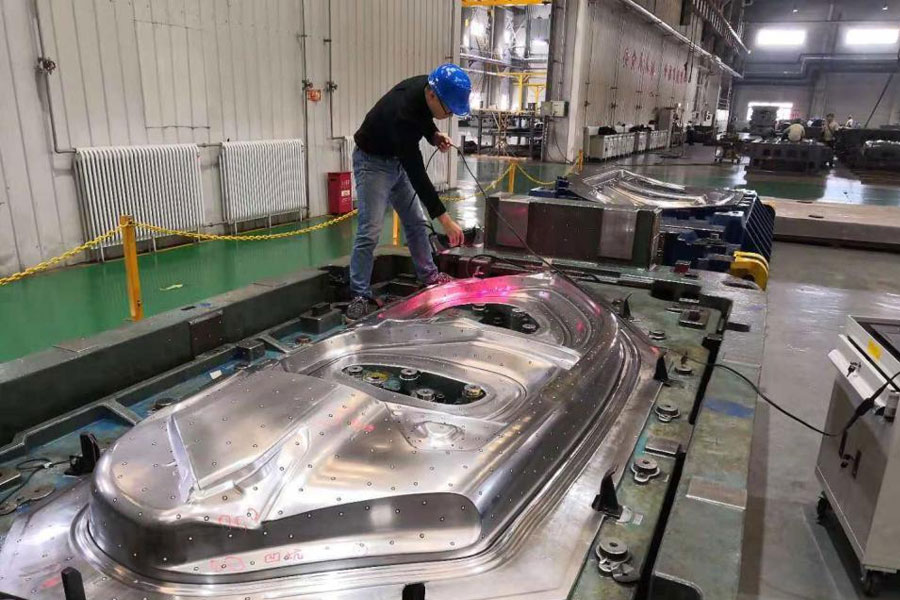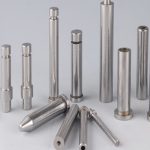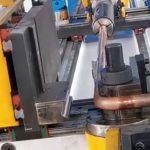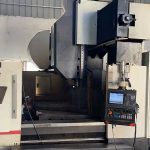Whether it is better to use “steel” or “Aluminum” as the material for the car has caused an uproar in the luxury car market. The origin of the incident is: Mercedes-Benz’s new E-Class is accused of different domestic and foreign standards. Unlike the overseas version of the Mercedes-Benz E-Class, the domestically-made new long-wheelbase E-Class has changed the aluminum covering parts that were originally used in many places. Steel material.
Subsequently, Mercedes-Benz China issued a statement that the domestically-made new E-Class complies with the unified global production standards. To be sure, the domestic version of the new E-class is heavier than the overseas version. How much weight gain? There are different versions, with a minimum of 22kg and a maximum of 200kg. No matter which number, it has not been officially recognized. Use steel or aluminum? Might as well stand in their respective positions, with two flowers blooming, one for each.
I am a steel wire, I am proud. Explanation of terms-“steel wire”: This “steel wire” is not a fan of Guo Degang. Note that it is “steel” rather than “gang”. “Steel wire” is not really a steel wire drawn into a slender strip and then rolled up. It is a building material. The “steel wire” mentioned here is a fan who prefers automotive steel materials.

Why use steel? Cheap!
From the perspective of car companies, for cost reduction considerations, it is understandable to replace steel with aluminum without sacrificing safety and production standards. Steel is mature and reliable, and more importantly, low manufacturing cost. Aluminum can greatly reduce weight, but the manufacturing process is slightly more complicated and the cost is much higher than that of steel. How much can a car save by replacing steel with aluminum? The answer varies with different models, and the car companies are also secretive and unknown to the outside world. An American automotive structure expert said that replacing steel with aluminum would increase the cost of an automobile body structure by US$850 to US$2,800.
High-strength steel can also reduce weight. In fact, as the main material for automobile production, steel is also evolving, especially high-strength steel. High-strength steel can effectively solve the contradiction between lightweight, safety and cost. Compared with aluminum, high-strength steel is not inferior in weight reduction and performance, but the production cost is lower. All-aluminum bodies are only used in luxury cars, while high-strength steel has been popularized in A-class cars.
In the long run, the status of steel as the dominant material for automobiles will not be shaken, and aluminum can only appear as an auxiliary. Once the steel material technology breaks through again, it is not ruled out that the aluminum car body may be abandoned. Car weight reduction is a general trend, and it is a requirement to reduce energy consumption, but it is based on a major premise-the sustainable burden of car consumers. In this regard, steel has an advantage over aluminum.
Heavy weight is also an advantage. Take a step back and the weight of the body is not necessarily a bad thing. For a long period of time, cars have been “heavy” as their beauty. Communication among riders can often hear the compliment “your car is heavy and strong”. Ten years ago, Japanese cars were involved in the “body door” in China. That is the focus of the contradiction is not about changing steel to aluminum, but about “is the iron sheet thinner?” “Thin” and “light” are equated with “unsafe” and “cut corners”. The Japanese cars at the time were the same as the Mercedes-Benz today, which is hard to argue with. The weight of the car body will add points to safety. In China, many people still hold this view. The hot sales of SUVs in the past three years has something to do with its size and looks to be one of the key factors.
I’m Alcoa, I’m trending. Glossary—”Alcoa”: As the name suggests, good aluminum is also. Looking around today’s car-making technology circle, it is a trend to use “aluminum Alloy” instead of “steel” in body structure materials. The first to be popularized were super sports cars worth millions of dollars and luxury cars worth hundreds of thousands of dollars. From this, we know the meaning of our MISS “aluminum”-expensive, cutting-edge, and trendy.
Use “aluminum”, “environmental protection” GET!
Automotive lightweighting has always been a topic of research for engineers racking their brains, when aluminum alloy materials were found to be able to replace steel to make cars, allowing vehicles to achieve significant lightweight effects. To be honest, the engineers are ecstatic. People consider thinness to be beautiful, and cars also need to “loss”. Maybe you have a question: The car is light, and the car is not only unstable when driving, is it still dangerous? Don’t think that car designers are all pretty funny. It’s not that the car can’t be heavy, but it’s too heavy and inappropriate. Moreover, there is no causal relationship between vehicle weight and safety, the important thing is the body structure.
The all-aluminum body is a technology that uses aluminum alloy materials instead of steel as body panels and even structural frames. According to experiments conducted by international research institutions, 50% to 60% by weight of aluminum alloy can replace steel to achieve the same performance; using aluminum to make engines can reduce weight by 30%; aluminum radiators are 20% to 40 lighter than the same copper products %; The aluminum body of a car is more than 40% lighter than the original steel products, so the weight reduction effect of using aluminum instead of steel to make cars is significant.
Energy saving and consumption reduction are on the trend. If the weight of the vehicle is reduced by 10%, the fuel efficiency can be increased by 6% to 8%; for every 100 kg reduction in the vehicle’s curb weight, the fuel consumption per 100 kilometers can be reduced by 0.3 to 0.6 liters. From the cost point of view, reducing the weight of the car by 1 kg can reduce the expenditure by about 10 US dollars.
Aluminum bodies have become popular. At the moment, it is relatively expensive to make new cars all-aluminum bodies. However, the attractive weight reduction effect brought about by “substituting aluminum for iron” has never stopped since the birth of the automobile industry. All-aluminum engines, aluminum cylinder heads, aluminum control arms, and aluminum subframes are all successful cases of replacing iron with aluminum since the development of the automotive industry. Although the mass-produced cars currently manufactured in China, including joint venture brands, rarely use all-aluminum bodies. However, many imported models, especially high-end imported models, have already used or will use all-aluminum bodies, which seems to be a trend. According to a survey by the automotive consulting agency Duckers, the aluminum used for bicycles in North America, the European Union, and Japan are 47%, 24%, and 15% higher than those in China, respectively, and the aluminum machining used in bicycles in Europe, the United States and Japan continues to grow.
In the large and medium-sized sedans produced in Europe (Mercedes-Benz E-Class and BMW 5 Series), the average amount of aluminum used in the body part of each car was almost 0 before 1990, about 40 kg in 2005, and now close to 80 kg. . Ducker’s report even boldly stated that by 2025, cars with all-aluminum bodies will reach 18%.
Expensive, only for a while. Of course, we have to admit that the all-aluminum body not only requires higher production technology, but also brings higher costs in after-sales maintenance. However, pay attention: this is all based on “the scarcity is the most expensive”. It is true that most of the current aluminum materials are only used in expensive new super sports cars or luxury cars, but when aluminum bodies become popular, steel bodies are gradually eliminated, the production process becomes mature, and the cost of after-sales maintenance naturally decreases.
Jaguar XFL For example, the domestically-made new Jaguar XFL that just went on the market has taken the “all-aluminum body” as a selling point to challenge the luxury car segment that has long been occupied by the top three German ABBs. The hanging display of an XFL all-aluminum frame at the launch site has aroused widespread interest among car fans. This signal also tells everyone: “All-aluminum body” has appeared in domestic cars with a level of more than 300,000 yuan. In the next few years, it will be applied to ten Multi-million dollar car is not a surreal idea.
Link to this article: Is It Better To Use “Steel” Or “Aluminum” For Automobile Materials
Reprint Statement: If there are no special instructions, all articles on this site are original. Please indicate the source for reprinting:https://www.cncmachiningptj.com/,thanks!
 Sheet metal, beryllium, carbon steel, magnesium, 3D printing, precision CNC machining services for heavy equipment, construction, agriculture and hydraulic industries. Suitable for plastics and rare alloys machining. It can turn parts up to 15.7 inches in diameter. Processes include swiss machining,broaching, turning, milling, boring and threading. It also provides metal polishing, painting, surface grinding and shaft straightening services. The production range is up to 50,000 pieces. Suitable for screw, coupling, bearing, pump, gearbox housing, drum dryer and rotary feed valve applications.PTJ will strategize with you to provide the most cost-effective services to help you reach your target,Welcome to Contact us ( [email protected] ) directly for your new project.
Sheet metal, beryllium, carbon steel, magnesium, 3D printing, precision CNC machining services for heavy equipment, construction, agriculture and hydraulic industries. Suitable for plastics and rare alloys machining. It can turn parts up to 15.7 inches in diameter. Processes include swiss machining,broaching, turning, milling, boring and threading. It also provides metal polishing, painting, surface grinding and shaft straightening services. The production range is up to 50,000 pieces. Suitable for screw, coupling, bearing, pump, gearbox housing, drum dryer and rotary feed valve applications.PTJ will strategize with you to provide the most cost-effective services to help you reach your target,Welcome to Contact us ( [email protected] ) directly for your new project.
Link to this article:Is It Better To Use "Steel" Or "Aluminum" For Automobile Materials
Reprint Statement: If there are no special instructions, all articles on this site are original. Please indicate the source for reprinting:Alloy Wiki,thanks!^^







